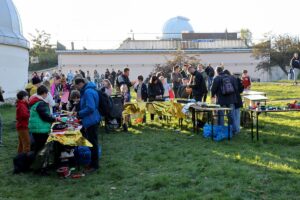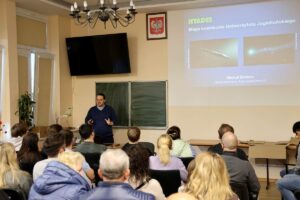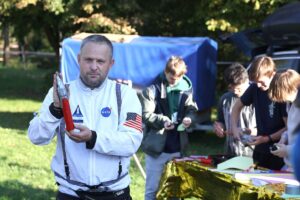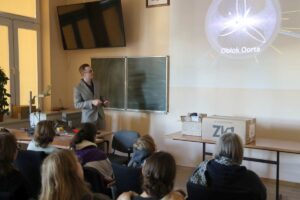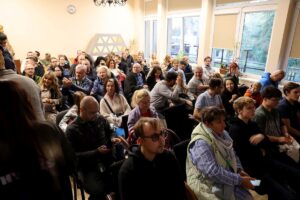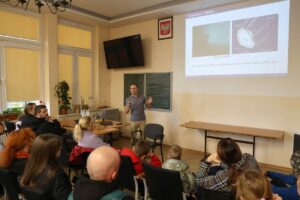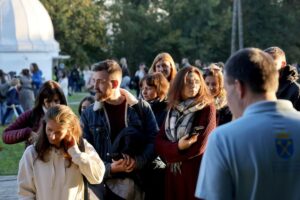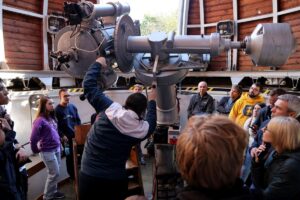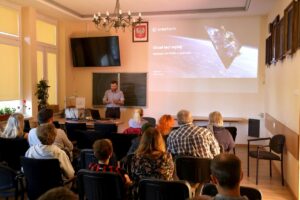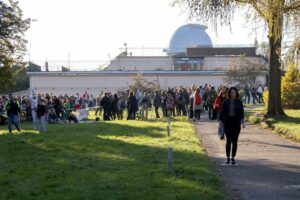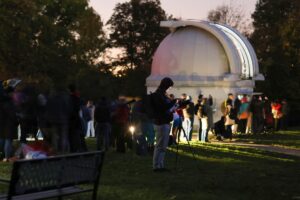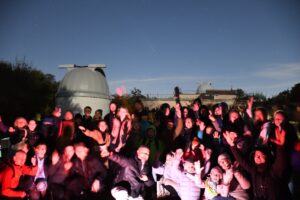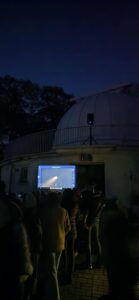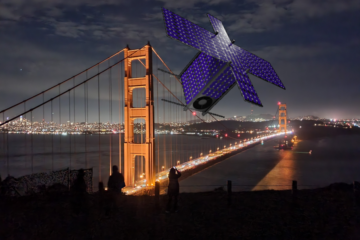Comet C/2023 A3 (Tsuchinshan-ATLAS) offered a great show during the Comet Night event on October 19-20, 2024, at the Astronomical Observatory of the Jagiellonian University in Krakow. Organized by the HYADES Science Team, the event included stargazing, lectures, and outdoor activities, drawing an unexpectedly large crowd. It became one of the largest popular science events at our observatory in recent years!
As evening set in, crowds gathered to view a newly visible comet through telescopes, including Maksutov and Grubb, with many observing its coma and dust tail. Large astronomical binoculars provided a detailed, wide-angle view, and some even saw the comet with the naked eye. A digital telescope displayed a live comet image on a screen, revealing both the dust tail and a rare anti-tail after a short exposure. Participants could take their own photos of the comet and capture long-exposure keepsake images.
During the day, visitors observed the Sun and Venus. The Maksutov telescope was used for viewing Venus’ phases, while the Sun was observed through various telescopes equipped with different filters, showcasing solar granulation and prominences. Digital telescopes allowed visitors to download images directly to their phones.
Due to high interest, three scheduled lectures by HYADES project scientists were repeated multiple times. Dr. Michał Drahus discussed why scientists in Krakow are building a highly sensitive hydrogen and deuterium space telescope, far exceeding the sensitivity of Hubble Space Telescope. Dr. Piotr Guzik and Mikołaj Sabat captivated audiences by comparing the unpredictability of comets to cats, and Sabat demonstrated comet composition using dry ice and other materials. Bartosz Paszcza of Creotech Instruments, the company that runs phase 0 of the HYADES project, gave a third lecture on the role of Polish private space industry.
For younger attendees, the event offered popular rocket-building workshops, a mobile planetarium, and space-themed educational workshops inspired by HYADES. Children built model rockets and simulated comets colliding with the Moon’s surface, an activity linked to the HYADES mission’s goal of investigating whether early bombardments brought water to Earth.
- Photo by Krzysztof Magda
- Photo by Krzysztof Magda
- Photo by Krzysztof Magda
- Photo by Krzysztof Magda
- Photo by Robert Nowakowski
- Photo by Krzysztof Magda
- Photo by Krzysztof Magda
- Photo by Krzysztof Magda
- Photo by Krzysztof Magda
- Photo by Krzysztof Magda
- Photo by Krzysztof Magda
- Photo by Krzysztof Magda
- Photo by Krzysztof Magda
- Photo by Robert Nowakowski
- Photo by Robert Nowakowski
